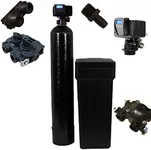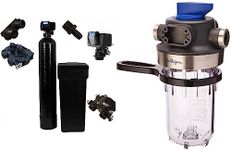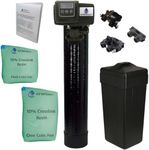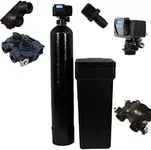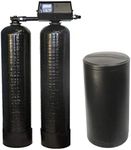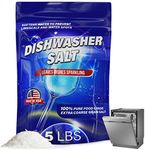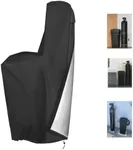Buying Guide for the Best Fleck Water Softeners
Choosing the right water softener can significantly improve the quality of your water, making it more pleasant to use and extending the lifespan of your appliances. When selecting a water softener, it's important to consider several key specifications to ensure you get the best fit for your needs. Understanding these specifications will help you make an informed decision and choose a model that will effectively address your water hardness issues.Grain CapacityGrain capacity refers to the amount of hardness the water softener can remove before it needs to regenerate. This is important because it determines how often the system will need to regenerate, which affects both efficiency and convenience. Grain capacities typically range from 24,000 to 80,000 grains. For smaller households with low to moderate water hardness, a lower grain capacity (24,000-32,000) may be sufficient. Larger households or those with very hard water may need a higher capacity (40,000-80,000). Consider your household size and water hardness level to choose the right capacity.
Regeneration TypeRegeneration type refers to how the water softener refreshes its resin beads to continue removing hardness from water. There are two main types: time-initiated and demand-initiated. Time-initiated systems regenerate at set intervals, regardless of water usage, which can be less efficient. Demand-initiated systems regenerate based on actual water usage, making them more efficient and cost-effective. If you have fluctuating water usage, a demand-initiated system is likely the better choice. For consistent water usage, a time-initiated system may suffice.
Salt EfficiencySalt efficiency measures how effectively a water softener uses salt during the regeneration process. This is important because higher salt efficiency means lower operating costs and less environmental impact. Salt efficiency is usually expressed in grains of hardness removed per pound of salt. Look for models with higher salt efficiency ratings if you want to minimize salt usage and maintenance costs. If you are environmentally conscious or want to reduce ongoing expenses, prioritize high salt efficiency.
Flow RateFlow rate indicates how much water the softener can treat per minute, measured in gallons per minute (GPM). This is crucial for ensuring that your household water needs are met without a drop in water pressure. Flow rates typically range from 7 to 15 GPM. Smaller households with fewer water fixtures can opt for lower flow rates (7-10 GPM), while larger households with multiple bathrooms and high water usage should consider higher flow rates (10-15 GPM) to maintain adequate water pressure.
Control ValveThe control valve is the component that regulates the water softening process, including regeneration cycles. A reliable control valve ensures efficient operation and longevity of the system. Look for models with high-quality, durable control valves that offer easy programming and maintenance. If you prefer a set-and-forget system, choose a model with an advanced control valve that automates most functions. For those who like more control, a manual or programmable valve might be more suitable.
Bypass ValveA bypass valve allows you to divert water around the softener, which is useful for maintenance or if you need untreated water for certain tasks. This feature is important for convenience and flexibility. Ensure the model you choose includes a bypass valve, especially if you anticipate needing untreated water occasionally or want to simplify maintenance. If you have specific needs for untreated water, such as watering plants, a bypass valve is essential.
